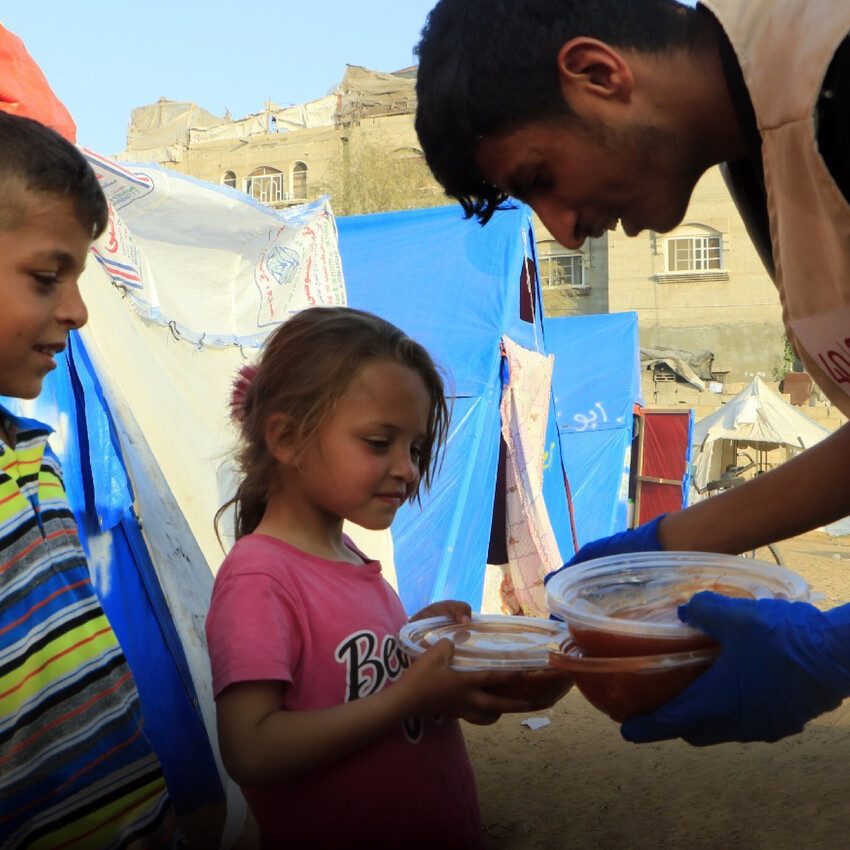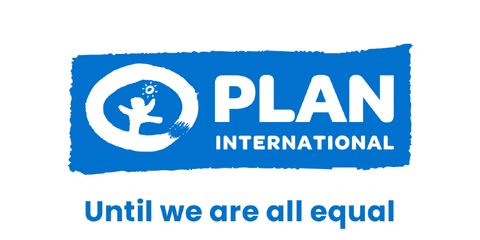Giving Gaza’s children a last chance
11 April 2024Global Humanitarian Director Dr Unni Krishnan blogs on the imminent famine in Gaza urging donors to push for Palestinian children's last hope.

In the bombed-out desolation of northern Gaza, famine is a clear and present risk. In mid-March, the Integrated Food Security Phase Classification (IPC- a body that includes UN agencies such as the World Food Programme and the World Health Organization), painted a chilling picture: “famine is imminent as 1.1 million people, that is half of Gaza’s population, are facing catastrophic food insecurity”. In simple terms, starving.
The catastrophic levels of human-made hunger in Gaza are the highest ever recorded on the IPC scale. Never before have we seen such rapid deterioration into widespread starvation.
Six months after the most recent war on Gaza started, children are locked in a race against time. The number of children killed has surpassed that of all children killed by conflict worldwide in the last four years. Hospitals and health services have been decimated. With medical supplies running out, doctors have been left with no choice but to operate on children without anaesthetics.
In direct contravention of a UN Security Council ceasefire resolution, Israel’s army continues to bomb even as life-saving relief and other essential supply lines are cut off. This cruelty must stop.
During previous humanitarian missions to Gaza and occupied Palestinian territory, I have seen streets reverberating with the laughter of children, their dreams as boundless as the sky they once flew kites in. Today, Fatima, a brave and resilient youth activist who works with Plan International, tells us she feels helpless and that her existence has no value.
A painful way to die
It is now our last chance to avert famine.
The war and ongoing restrictions on aid delivery is accelerating malnutrition among children. In mid-March, UNICEF warned that one in three children under the age of two in the Northern Gaza Strip suffer from acute malnutrition. This is staggering escalation from 15.6 per cent in January, all in a period of few weeks. Worse, malnutrition and dehydration has claimed the lives of at least 23 children.
We all know the word starvation, but what does it actually mean?
Left unattended, starvation leads to death. Starvation occurs over three stages. Skipping a meal comes first, common in war settings. Then comes a prolonged period of food and nutrition deprivation and the body starts relying on stored fats for energy. In the final stage, it turns fatal when all stored fats have been depleted and the body turns to bone and muscle for energy.
Without adequate food, the human body can last only for a few weeks. Extreme weakness from a lack of essential nutrients, such as calcium and iron, proteins and amino acids, makes it difficult for a child to walk, talk, and even breathe. Gradually, their immune systems weaken. Their organs will slow down and one day grind to a halt.
This is perhaps the most painful way for a child to die. Witnessing their agony is one of the most painful memories for a sibling or parent, and something that demoralizes humanity. This is why deliberate starvation is considered one of the cruelest and more reprehensible tactics that can be deployed in a conflict.
In Gaza, doctors and medical staff testify that they’re seeing newborn babies dying because their birth weight is too low. Can you imagine the starvation that Gaza’s children are now living through unfolding in New York, Sydney or London? The right to survival is one of the key four articles in the UN Convention on the Rights of the Child.
Some suffering is not immediate or visible
The impact of starvation and under-nutrition is often felt by the next generation. Malnutrition leaves debilitating impacts on children such as increased morbidity and mortality, poor development and learning capacity, increased risk of infections and non-communicable diseases. Well-nourished children are 33 percent more likely to escape poverty as adults.
When children who experience hunger grow up and have their own children, they are more likely to be born premature or underweight creating a continuous cycle of poverty. Malnourished mothers are not able to pass adequate breast milk to their newborn infants.
In short, famine means that most children face one of two terrible choices – starvation, or survival only to continue suffering over years and generations to come.
Those who survive will also have to contend with the psychological impact of war, which is often invisible but still catastrophic. Children in Gaza have witnessed death, suffering and violence that would be unimaginable to most adults. An 18-year-old in Gaza today will have lived through conflict in 2006, 2008, 2012, 2014, 2021 and now since October 2023.
I have witnessed the determination of children in Gaza and other war zones to survive no matter what. However, there is only so much that young minds can take.
“Food never used – donated for children now killed by famine.”
A few kilometres or a few minutes’ drive away from Gaza are hundreds of trucks, including trucks belonging to Plan International, waiting to enter via the Egyptian border. They are just minutes away from starving children, but systematically blocked by the Israeli army.
What does the forecast look like? How do you stop this?
Let’s be clear. It is not food that is in short supply. A few kilometres or a few minutes’ drive away from Gaza are hundreds of trucks, including trucks belonging to Plan International, waiting to enter via the Egyptian border. They are just minutes away from starving children, but systematically blocked by the Israeli army.
The entry of these trucks and relief supplies into Gaza will save children’s lives. If not, in a few weeks, these trucks will contain a painful truth: “Food never used — donated for children now killed by famine”.
Where there is safe, guaranteed access for humanitarian workers and relief supplies, Plan International and our humanitarian colleagues have been able to reach people in desperate need. Since the start of Ramadan, Iftar meals have been provided to a total of 6,000 internally displaced people in Rafah via Taawon, a local partner. Working with the Egyptian Red Crescent, we have also delivered 600 food baskets, 1,000 first aid kits and 1,600 cartons of water. But much more is needed. It is absolutely critical that safe humanitarian access to Gaza is guaranteed at speed, so that aid agencies can deliver supplies to civilians, especially malnourished children and pregnant women.
Immediate release of all civilian hostages held in Gaza and Palestinian children held as prisoners should be a priority.
As the UN Secretary General António Guterres said recently: “The eyes of history are watching. We cannot look away.”
We can still change the course of history. A compassionate approach towards children is the starting point to stopping this unjust and cruel war. This will save lives and give children a chance at enjoying the basics of childhood – good health, education, and safety.
We must all play our part in calling for an end to this avoidable violence and suffering, for the sake of Gaza’s children.
